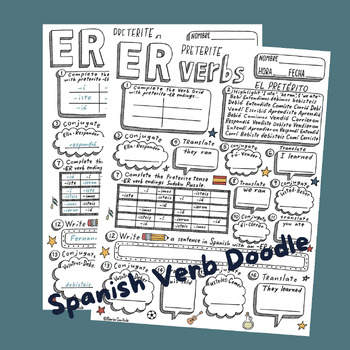

To add a little energy to the lesson, shift in a lively way between verbs, persons and numbers, and filling in the paradigms. Proceed to elicit the forms in Spanish by calling out in English she eats, they live, etc., and pointing to people to give the Spanish form. Above one paradigm, still left blank, write comer and above the other, vivir. Beneath that, draw two of the six-holed paradigms and leave them blank. Next, write the word Present in big letters on the board to the students’ left side. Do the drill orally, in a random fashion and preferably using synoptic conjugation. I almost always like to throw in trabajar because it is tough for many of them to say. Do this with at least five different -AR verbs. Tell them next that before they can proceed, they need to do a quick review of the regular -AR verbs. Tell them there are also three sets of endings in the preterite, but that they aren’t distributed or divided according to infinitive – at least not perfectly. Ask them how many sets of endings there are for the present tense (three, one each for -AR, -ER and -IR).

Tell students that today is a very important day for their future with Spanish because they are going to see something slightly new.

#Er ir verb endings spanish preterite uiz series#
This is the second in the series of lesson plans about the preterite, in addition to the overview of the preterite.


 0 kommentar(er)
0 kommentar(er)
